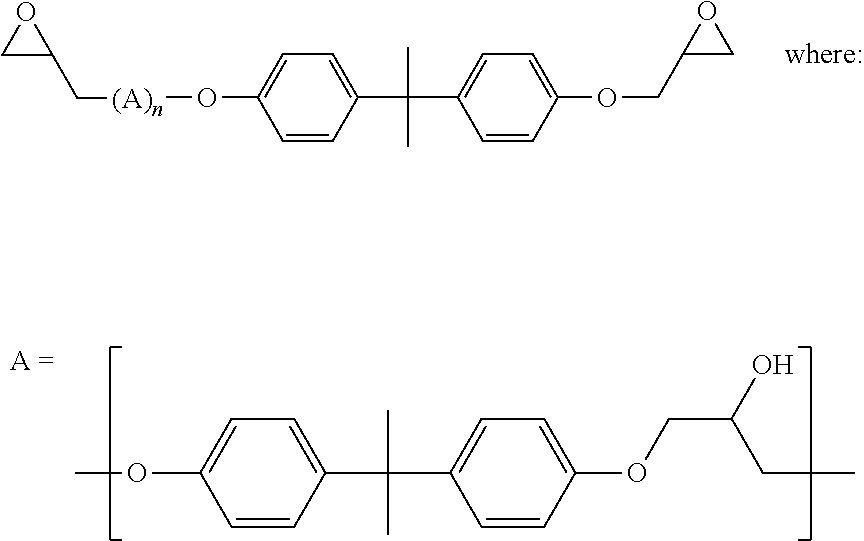Low bake autodeposition coatings
a technology of autodeposition coating and low-bake, which is applied in the direction of coatings, emulsion paints, polyurea/polyurethane coatings, etc., can solve the problems of poor performance of cured coatings in terms of corrosion resistance, chemical resistance and high temperature resistance, and limited paint types that can be applied to uncured autodeposition coatings. achieve the effect of sufficient chemical resistance and improved corrosion resistan
- Summary
- Abstract
- Description
- Claims
- Application Information
AI Technical Summary
Benefits of technology
Problems solved by technology
Method used
Image
Examples
example 1a
aration with DMP Blocked HDI Trimer, 70% and Phenoxy Resin
[0079]A latex was made with the components listed in Table 1a. The final latex was obtained with a solid content of 35.0% and a particle size of approximately 230 nm.
TABLE 1aComponentReagentAmount wt %Epoxy / Phenoxy resinBPA epoxy resin,7.66EEW: 860-930 g / eqPhenoxy resin, 32000 MW5.11Curing AgentDMP Blocked HDI Trimer, 70%4.88Monomer mixtureStyrene / Acrylic18.442-hydroxyethyl methacrylate0.71SolventButylene carbonate1.55Surfactant SolutionSodium lauryl sulfate1.61DI Water53.19Promoter1% FeSO4 solution0.02Reductant Solution ISFS0.01DI water0.43Reductant Solution IISFS0.10DI water3.09Oxidant Solution70% tBHP solution0.16DI water3.04
example 1b
aration with DMP Blocked HDI Trimer, 70% and BPA Epoxy Resin
[0080]A latex was made with the components listed in Table 1a, except the phenoxy resin was replaced with BPA epoxy resin, EEW: 2500-4000 g / eq. The final latex was obtained with a solid content of 35.8% and a particle size of approximately 220 nm.
example 2a
ration and Testing Results of Latex Example 1a
[0081]Autodeposition make-up and bath of Latex Example 1a were made according to Table I and the bath parameters were adjusted within ranges as listed in Table II. CRS panels were coated and tested, and the results are listed below.
TABLE 2aCoatingprocessProcess IProcess IProcess IIIPost-catalysis0.1% DBUsolutionBake30 min. / 130° C.30 min. / 177° C.30 min. / 130° C.(Time / Temp.)MEK DR16>200>200504 NSS (mm)13.58.55.1
PUM
| Property | Measurement | Unit |
|---|---|---|
| temperatures | aaaaa | aaaaa |
| temperature | aaaaa | aaaaa |
| temperature | aaaaa | aaaaa |
Abstract
Description
Claims
Application Information
 Login to View More
Login to View More - R&D
- Intellectual Property
- Life Sciences
- Materials
- Tech Scout
- Unparalleled Data Quality
- Higher Quality Content
- 60% Fewer Hallucinations
Browse by: Latest US Patents, China's latest patents, Technical Efficacy Thesaurus, Application Domain, Technology Topic, Popular Technical Reports.
© 2025 PatSnap. All rights reserved.Legal|Privacy policy|Modern Slavery Act Transparency Statement|Sitemap|About US| Contact US: help@patsnap.com

